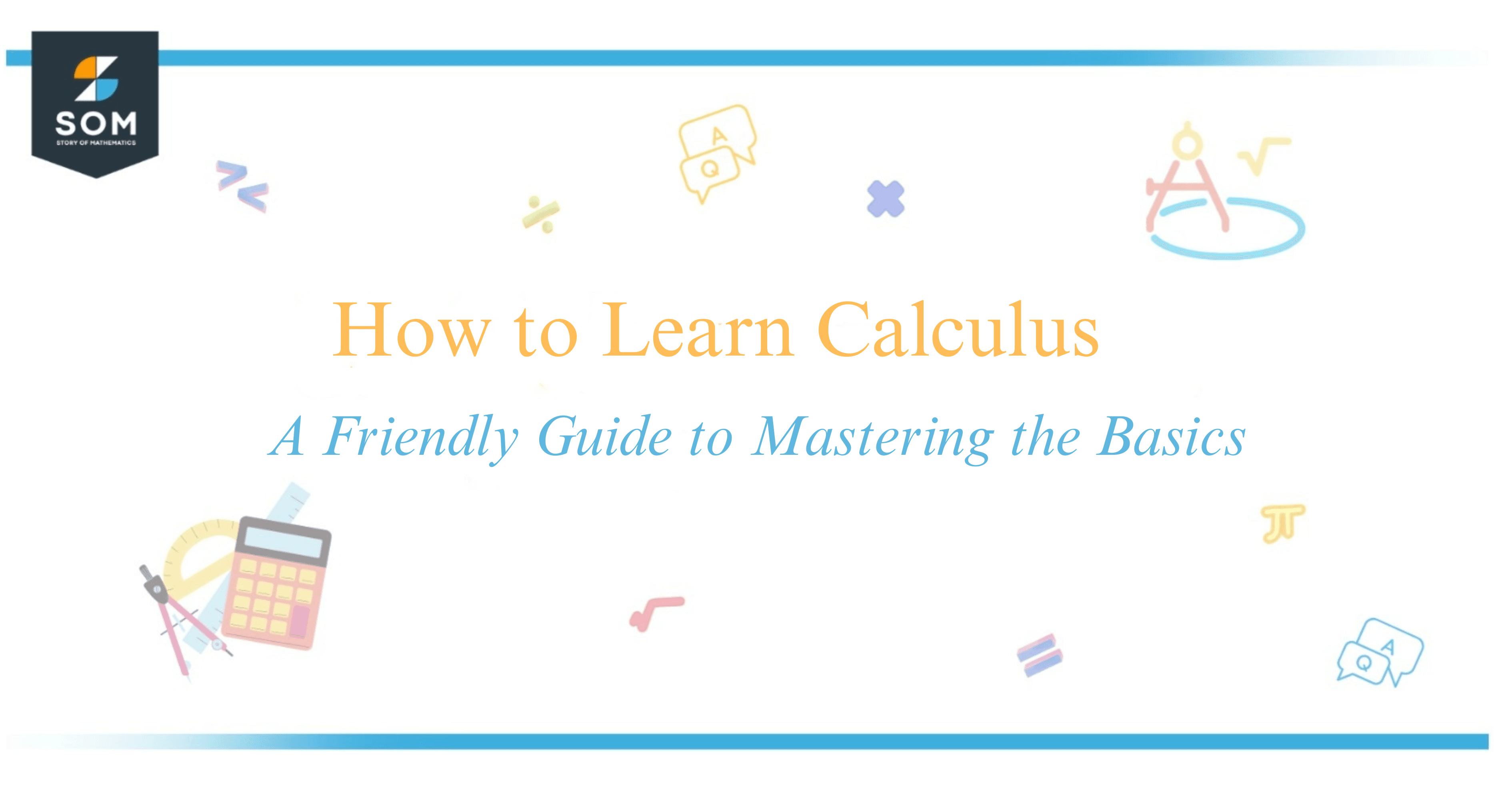JUMP TO TOPIC

To learn calculus, I should familiarize myself with the foundational concepts of mathematics. Strengthening my understanding of algebra, geometry, and trigonometry from high school math is essential.
These subjects provide the building blocks for calculus by introducing the behavior of functions, the beauty of shapes, and the rhythms of angles and their measures. As a beginner, it’s crucial for me to grasp these basic principles; calculus is a challenging subject but also an extremely rewarding one that offers a new lens to view and analyze the dynamic world around us.
I approach calculus with an open mind, recognizing that it is not merely a set of rules and formulas but a language that describes change and motion. By breaking down complex problems into simpler steps, I begin to appreciate the elegance and logic of calculus.
Embracing this journey requires patience and practice. Like learning to play an instrument or mastering a new language, proficiency in calculus comes from consistent and structured practice. And just when you think you’ve grasped the concept of the derivative, the intriguing world of integrals awaits, promising new adventures in this intellectual pursuit.
Steps to Learn the Basics of Calculus
When I first started learning calculus, understanding the core principles was vital to my success. Calculus is the mathematical study of continuous change, and getting to grips with it means grasping a few fundamental concepts.

1. Understanding Functions:
At the heart of calculus are functions. They depict relationships between two variables, typically x (the independent variable) and y (the dependent variable).
2. Grasping Limits:
Limits are essential to calculus. They help me understand the behavior of functions as they approach specific points. For instance, the limit of ( f(x) ) as ( x ) approaches a value a is denoted as ( \lim_{x \to a} f(x) ).
3. Learning the Derivative:
The derivative represents the rate of change or the slope of a function at any point. Think of it as measuring how quickly y is changing for a tiny change in x. Mathematically, the derivative of $f(x) ) is noted as ( f'(x) ) or ( \frac{dy}{dx} $.
4. Slope and the Tangent Line:
In calculus, the slope is the steepness of the curve at a particular point, and the tangent line is a straight line that just touches the curve at that point. The slope at point a is the value of the derivative at a, ( f'(a) ).
5. The Area Under a Curve:
Finally, learning calculus involves integration, which, in a practical sense, can mean finding the area beneath a curve. This concept is denoted as the integral of ( f(x) ), written as $\int f(x) ,dx$.
Quick Tips Table
| Concept | Symbol | Importance |
|---|---|---|
| Functions | $f(x) $ | Represent relationships |
| Limits | $\lim$ | Understand function behavior |
| Derivative | ( f'(x) ) | Measure rate of change |
| Tangent Line | — | Slope at a point |
| Area Under Curve | $\int$ | Calculate integral |
Mastering these concepts has provided me with a strong foundation in calculus and allowed me to further explore its various applications.
Diving Deeper into Calculus
When I first encountered integrals, it was fascinating to see how they could be used to find the area under a curve. The concept isn’t just mathematical but also beautifully visual. Integrals add up the infinite pieces – infinitesimally small rectangles, to be precise – to calculate the area. This method is known as the Riemann sum, symbolized by:
$S = \sum_{i=1}^{n} f(x_i^*) \Delta x $
where $ \Delta x$ is the width of each small rectangle and $ f(x_i^*) $ is the function evaluated at any point within the $i^{th}$ rectangle.
Moving to continuity is key in understanding integrals because we typically integrate over intervals where the function has no breaks or jumps. Continuity ensures that the function can be graphed without lifting my pencil off the paper.
The Fundamental Theorem of Calculus links the concept of differentiation with integration and is the backbone of calculus. It tells me that if ( F ) is an antiderivative of ( f ), then:
$ \int_{a}^{b} f(x) dx = F(b) – F(a)$
With area under a curve, I apply this theorem practically. For example, the area ( A ) under function ( f(x) ) from ( a ) to ( b ) is given by the integral:
$ A = \int_{a}^{b} f(x) dx$
Lastly, infinite sums are related to integration since integrating certain functions over limits that approach infinity is akin to adding up an infinite series of numbers. These sums often emerge in real-world applications where I predict totals over continuous intervals.
Understanding these concepts has been instrumental in my deeper comprehension of calculus and its elegant application to both abstract and practical problems.
Steps to Learn Advanced Calculus Concepts
When I first approached advanced calculus, I realized the importance of building a strong foundation in multivariable calculus and differential equations. These areas are pivotal for applications in physics, engineering, and science. Here’s my step-by-step method that served me well:
Multivariable Calculus: I started with understanding the concept of functions of several variables. Practical comprehension of partial derivatives and multiple integrals is essential. For example, to find the local extrema of a function $f(x, y)$, I would compute the partial derivatives $\frac{\partial f}{\partial x}$ and $\frac{\partial f}{\partial y}$ and set them to zero.
Differential Equations: Grasping both ordinary and partial differential equations (ODEs and PDEs) is key. I tackled problems such as solving the ODE $\frac{dy}{dx} = ay$, which models exponential growth, a prevalent concept in various fields.
Equation Type Example Relevance ODE $\frac{dy}{dx} = ay$ Physics, Population Dynamics PDE $\frac{\partial^2 u}{\partial t^2} = c^2\frac{\partial^2 u}{\partial x^2}$ Heat & Wave Equations in Engineering Applications: I applied calculus concepts to real-world problems. This could involve optimizing a process or analyzing rates of change. For instance, in physics, calculating the trajectory of a projectile using the acceleration due to gravity $g$ often involves basic principles of calculus.
Interdisciplinary Connections: Understanding how calculus integrates with physics and engineering principles was crucial. I often referred to how differential equations represent physical phenomena, like how Newton’s second law $F = ma$ translates to the differential equation $m\frac{d^2x}{dt^2} = F(x, t)$.
By following these steps consistently, I found that advanced calculus concepts became much clearer, and I could apply them confidently in various scenarios. Remember practice is important; I made it a habit to solve numerous problems and seek diverse examples.
Tools and Resources for Learning Calculus
When I started learning calculus, I found that having the right tools and resources was essential. Here’s a breakdown of some that can help you grasp the concepts effectively:
Textbooks: Start with a good textbook, one that’s well-reviewed and aligns with your learning style. Look for texts that include plenty of practice problems.
Courses: Online platforms offer a range of calculus courses. For beginners, free courses can be found that provide an excellent introduction. MIT’s OpenCourseWare is a great place for more advanced learning, offering free course materials from real MIT courses.
Calculators:
- Basic Calculators: Suitable for simple arithmetic which can aid in quick computations.
- Graphing Calculators: Essential for visual learning and understanding complex functions.
| Feature | Basic Calculator | Graphing Calculator |
|---|---|---|
| Plotting Graphs | Not Possible | Possible |
| Complex Calculations | Limited | Advanced Features |
Apps: Both the iOS App Store and Google Play offer apps designed to assist with calculus problems and offer interactive learning.
Programming: Understanding calculus concepts helps in different areas of software development, particularly in fields requiring data analysis or 3D graphics.
Online Platforms: Brilliant.org provides interactive calculus problems that help solidify concepts through practice.
By combining these resources, I’ve been able to deepen my understanding of calculus. Keep in mind that perseverance and practice are crucial no matter which tool or resource you choose!
Preparing for Calculus Studies
Before diving into calculus, I make sure to have a strong foundation in several mathematical disciplines. Algebra forms the cornerstone, as it’s essential for manipulating and understanding calculus equations. Keeping my algebra skills sharp allows me to handle calculus operations with confidence.
I revisit pre-calculus materials focusing on functions and their properties. Familiarity with different types of functions and their behaviors is crucial because calculus explores changes in these functions.
I also brush up on my knowledge of trigonometry and geometry, particularly on understanding triangles and their properties, since these topics often surface in calculus problems. Grasping concepts like the unit circle and trigonometric identities, such as $\sin^2(\theta) + \cos^2(\theta) = 1$, helps me navigate through calculus with greater ease.
Here’s the breakdown of previous knowledge which I find important:
| Area | Why It’s Important |
|---|---|
| Algebra | Solving equations, manipulating expressions |
| Pre-Calculus | Understanding different types of functions |
| Trigonometry | Working with angles and lengths in triangles |
| Geometry | Grasping space and shape relationships |
I also acknowledge that struggles in learning are natural. I approach these challenging moments with patience, knowing that mastering calculus is a gradual process. Persistence and regular practice in these precursor subjects smooth my path through the captivating world of calculus.
Conclusion
In my journey to learn calculus, I’ve found that a combination of structured learning and practical application yields the best results. To thrive in calculus, start with a robust understanding of pre-calculus concepts, particularly algebra and trigonometry.
Recognizing the importance of limits, such as understanding $\lim_{x \to a} f(x)$, and the Fundamental Theorem of Calculus, which connects differentiation and integration, is crucial.
I also emphasize the use of a graphing calculator or software like Mathematica to visualize problems. My progression involved tackling calculus problems daily to build proficiency. Integrating the formulas into my practice sessions, like the derivative formula $\frac{dy}{dx} = \lim_{h \to 0} \frac{f(x+h)-f(x)}{h}$, solidified my understanding.
Lastly, I encourage peer discussion and seeking help when necessary. Engaging with a community of learners can provide alternative perspectives and clarify difficult concepts. Remember, consistency in practice and a strong foundation in prerequisite math topics are the keys to mastering calculus.
